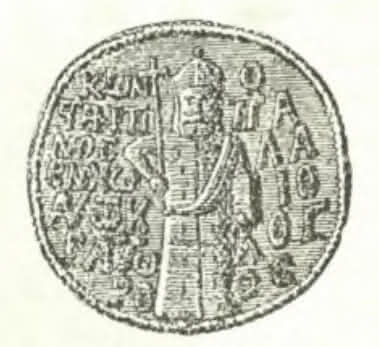On May 29, 1453, Constantinople, the capital of what was left of the Byzantine (or Eastern Roman) Empire, fell to the Ottoman Turks. The last Greek Emperor in Constantinople, Constantine XI, perished fighting alongside his men. As I noted in a 2020 article, most accounts report that the body of Constantine XI was not found among the thousands of dead soldiers. This was partially on account of the Emperor having cast aside his regal regalia before making what he knew would be his last stand with 200 of his bravest soldiers after the Ottomans breached the walls of Constantinople. (Also see my article on the last vespers at the Hagia Sophia.)However, I wrote in that post that other accounts had the Ottomans finding Constantine XI’s body, or at least what they thought was the body of the last Emperor of the Romans.

I came across one 1922 history that reported, contrary to most sources, that the body of Constantine XI was positively identified after the Ottoman victory. Irene L. Plunket wrote in her 1922 book, Europe in the Middle Ages:
The contest was absurdly unequal, for Mohammed had some two hundred and fifty-eight thousand men; and in May 1453 the inevitable end came to a heroic struggle. Up through the breaches in the wall, that no labour was left to repair, climbed wave after wave of fanatical Janissaries, shouting their hopes of victory and Paradise. Beneath their continuous onslaughts the defenders weakened and broke, fighting to the last amid the narrow streets, until Constantine himself was slain, his body only recognized later by the golden eagles embroidered on his shoes.
Emphasis added
Plunket went into far less detail about the final days of the Battle for Constantinople than the sources that I relied on in my 2020 article. Thus, for example, she does not expressly describe Constantine XI discarding his regal regalia before making his last stand. However, her note that he was positively identified by the egales embroidered on his shoes seems consistent with that aspect of Constantine XI’s story. Here, he could have discarded all of his imperial markings other than his shoes before charging at the enemy once it was clear that Constantinople had fallen.
Whichever sources that Plunket relied on for this brief passage about Constantine XI’s death appear to be in the minority, but it highlights that there are many unanswered questions about the final chaotic moments of the Eastern Roman Empire. But while the exact circumstances of Constantine XI’s death and the fate of his body will forever be shrouded in a bit of mystery, there is no mystery about the courage that the Emperor showed in his final days. Nineteenth century historian Cedomilj Mijatovic summarized the Battle for Constantinople:
The struggle continued for some time around the stop, until heaps of slain covered the ground sanctified forever by the heroic death of the last Greek Emperor.